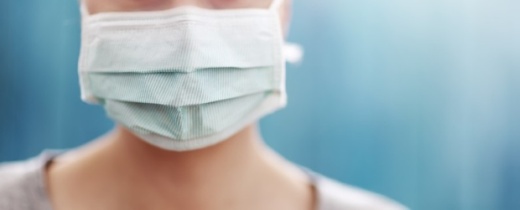In Texas, elected officials in some of the state's largest urban areas, including Houston, Austin and Dallas, have recently passed orders mandating businesses to require masks for both employees and customers.
In Maricopa County, which includes cities like Phoenix and Chandler in Arizona, local leaders unanimously approved a mask order for all enclosed public spaces where six feet of distance cannot be maintained.
Dr. Jill Weatherhead, an infectious disease and tropical medicine expert with the Baylor College of Medicine in Houston, said face coverings are a crucial part of the puzzle in slowing the spread of the coronavirus, especially in areas where social distancing of six feet cannot easily be maintained. Weatherhead spoke with Community Impact Newspaper on June 24 about the science behind how face coverings work, tips to keep in mind while wearing a mask and some common misconceptions.
Masking up: The basics
COVID-19 is most commonly spread through respiratory droplets from the nose and mouth released when people cough, talk, sneeze, sing or yell, Weatherhead said. The molecules, most of which are greater than five micrometers in size, are too large to travel much farther than six feet before dropping to the ground, she said.The facial covering adds an extra layer of protection for the wearer, who, potentially, could be infected, but its main purpose is to prevent the wearer from infecting others by containing those respiratory droplets, Weatherhead said.
"The big reason we’re really encouraging everybody to wear a mask is to really protect, not the wearer, but anyone who comes in close contact with the wearer," she said. "Any measure like facial coverings that can reduce the inoculant—how much virus the person is being exposed to—in addition to social distancing is very helpful."
Proper usage
It is crucial for a face covering to cover the wearer's mouth and nose down to the chin, Weatherhead said.While a lot of scientific literature has been written on N95 masks and surgical masks, many of the recently passed executive orders allow for homemade cloth masks as well, for which the research is ongoing. However, Weatherhead said any type of covering that covers your nose, mouth and chin while still being breathable will be sufficient in blocking the droplets that spread the virus.
"The cotton cloth you can find at home is going to be good," she said.
Weatherhead provided the following additional tips for mask wearing.
- Putting masks on and taking them off: Do not touch the outside or inside of the mask. Instead, take it off using the strings used to tie it around the head or rubber bands of elastic around the ears.
- Cleaning: Clean the mask after every use in the washer or with water and soap; either will be enough to kill the virus. Surgical or N95 masks can be reused. It is recommended they be put in a paper bag that allows them to breathe, which allows the virus to decay over time.
Are masks dangerous?
Weatherhead dispelled a common misconception that masks present a danger by causing reduced oxygen flow for the wearer, something she said will not happen with N95 masks nor homemade masks that use a breathable fabric, such as the tight-knit cotton cloth that makes up most clothing material. An example of a material masks should not be made out of is plastic that does not have any airflow, Weatherhead said."For people who are not used to wearing them, it can make you a little anxious. It can be uncomfortable," Weatherhead said. "The breathing pattern may be a little bit different. If you are able to get breath in and out, you are not going to have increased carbon dioxide levels, you are not going to have reduced oxygen flow."
Provided a mask is breathable, there is no time limit for how long a person can wear one, she said.
Notable exceptions
There are several populations for whom wearing a mask can be dangerous, Weatherhead said, including children under two years old and people who cannot remove them on their own. Recent mask orders in cities like Houston and Dallas apply to individuals age 10 and older, but Weatherhead said masks are safe to wear for children who are old enough to be able to remove them on their own.People also should not wear masks if they have a disease, such as severe COPD, severe emphysema or a lung condition with a baseline condition of shortness of breath, that could be exacerbated by mask wearing. Executive orders typically include exceptions for people who fall into this category as well. Weatherhead said a good alternative to a face covering in this situation is a face shield that comes down below the chin.
"It’s not going to be as protective, but it is another layer or another barrier of protection that can be used in those situations," she said.
Not a cure-all
Weatherhead stressed that face coverings are a tool that should be used in addition to social distancing and frequent hand-washing, both of which she said were ultimately more important in the overall battle to stop the spread of the virus.She described orders requiring the wearing of masks in businesses as "an excellent first step to slow the trajectory."
"It will certainly help slow it down, but it won’t be enough, and that is because we are back to that exponential growth phase with wide community spread," she said, referring to the Houston area in particular.
For areas that had previously flattened the curve but are now seeing an uptick in cases, reversing course will require a communitywide effort where people stay home when possible, practice social distancing and avoid large gatherings, Weatherhead said.
"[Face coverings are] an additive to those other measures," she said. "It's important to do in certain situations, but it's not the main measure that slows us down."





